

Beyond Merch: Fashion’s Obsession With Club Music Comes Full Circle
Meet the artists and labels using innovative design to reclaim electronic music's influence on fashion.
Club music and fashion have always been inextricably intertwined. For those in the club community, clothing signals affiliation within the subculture, and whether you abide by the clean lines and monochromatic style of the techno crowd or the more disheveled, leather-clad look of those in the industrial and EBM niche, your look says a lot about you. Scene-specific clothing gives the club-goer a way to wear their taste on their sleeve, facilitating the communal aspect of going out while giving fans a direct line of support to artists and labels they love. As the wave of uncertainty sweeps across the scene alongside COVID-19, this support is crucial, with merch becoming an increasingly important income stream for artists. If there was ever a time to buy merch, it’s now.
It’s no secret that clubs and raves are permanent fixtures on fashion brands’ mood boards–one need look no further than the work of designers like John Galliano and Alexander McQueen (both of whom were heavily involved in the London club scene), MCM’s new SS20 campaign or any season (past 2017) from Russian designer Gosha Rubchinskiy to understand what we mean–but the cultural exchange has been largely once-sided. Very rarely are the people who inspire the collections ever consulted when they are created.
These appropriations may have been easier to brush off in earlier periods of dance music history–when artists could support their careers through record sales and the odd DJ set alone–but a new era has made merchandise a viable and undeniably lucrative income stream for anyone operating in the underground, catalyzing a change that’s seen artists and labels reclaiming their own creative agency in fashion.
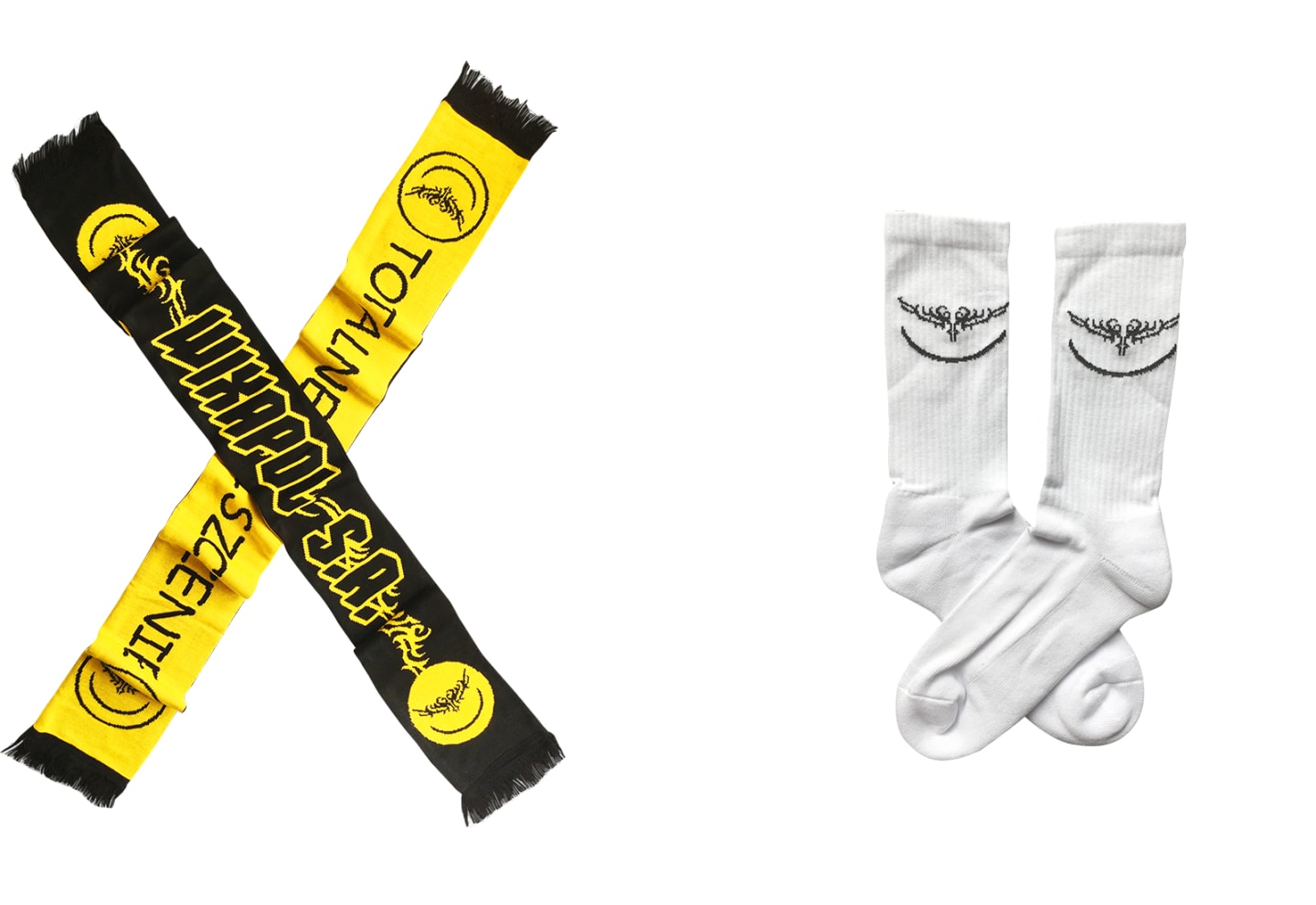
Most merch begins and ends in the same place: the humble t-shirt. While the medium offers endless possibility, the formula has remained largely the same: buy a pack of blanks, slap a logo across the front and sell them for 20-something bucks a pop. But club music’s escalating flirtation with graphic design–and a host of collaborations with visual artists, fashion labels and boutiques–has led merch in new and exciting directions.
Some take a maximalist approach to design: like Asian Dope Boys’ Tianzhuo Chen–whose playfully aggressive graphics for Shanghai label SVBKVLT and Gabber Modus Operandi are barely contained by the limits of the garment–or LA collective TAR, whose brutal logos pop off their shirts like snakes covered in their goopy namesake substance. Others, like Polish hardcore clan Wixapol, Berlin collective No Shade, and UAE-based experimental label Bedouin, create concise yet instantly-recognizable logos that borrow branding language to broadcast their organizations’ messages. Nearly propagandist in nature, these calling cards are applied to anything and everything, including hats, scarves, stickers and even household items like beach towels to inject the brand’s image into fans’ everyday lives.

The newfound power of merchandise can also be attributed to a string of collaborations between musicians and up-and-coming brands and boutiques. Phire Wire, a Japanese streetwear brand that, according to its website, seeks to “blend the ordinary and unconventional” through “working outside the fashion context, creating something unusual,” is responsible for a bulk of these collaborations. Last year, the brand partnered with Fatima al Qadiri, producing a shirt that elaborates on the drag looks, intense logos and political undertones of the cover art from her 2017 release, Shaneera. They are also responsible for this bandana, which accompanied the release of Toxe and Mechatok’s Emiranda project on Berlin experimental label Yegorka.
Unlike mass-distributed band tees, these items function more as small-run art projects, adding to a greater oeuvre that elaborates on the artists’ musical output by incorporating visual and tangible elements. A t-shirt made in collaboration with an artist can be as much a part of their identity as a DJ mix or club edit, and the ethos of brands like Phire Wire reflects a new mentality where fashion and music feed back into each other in a constant loop of inspiration.
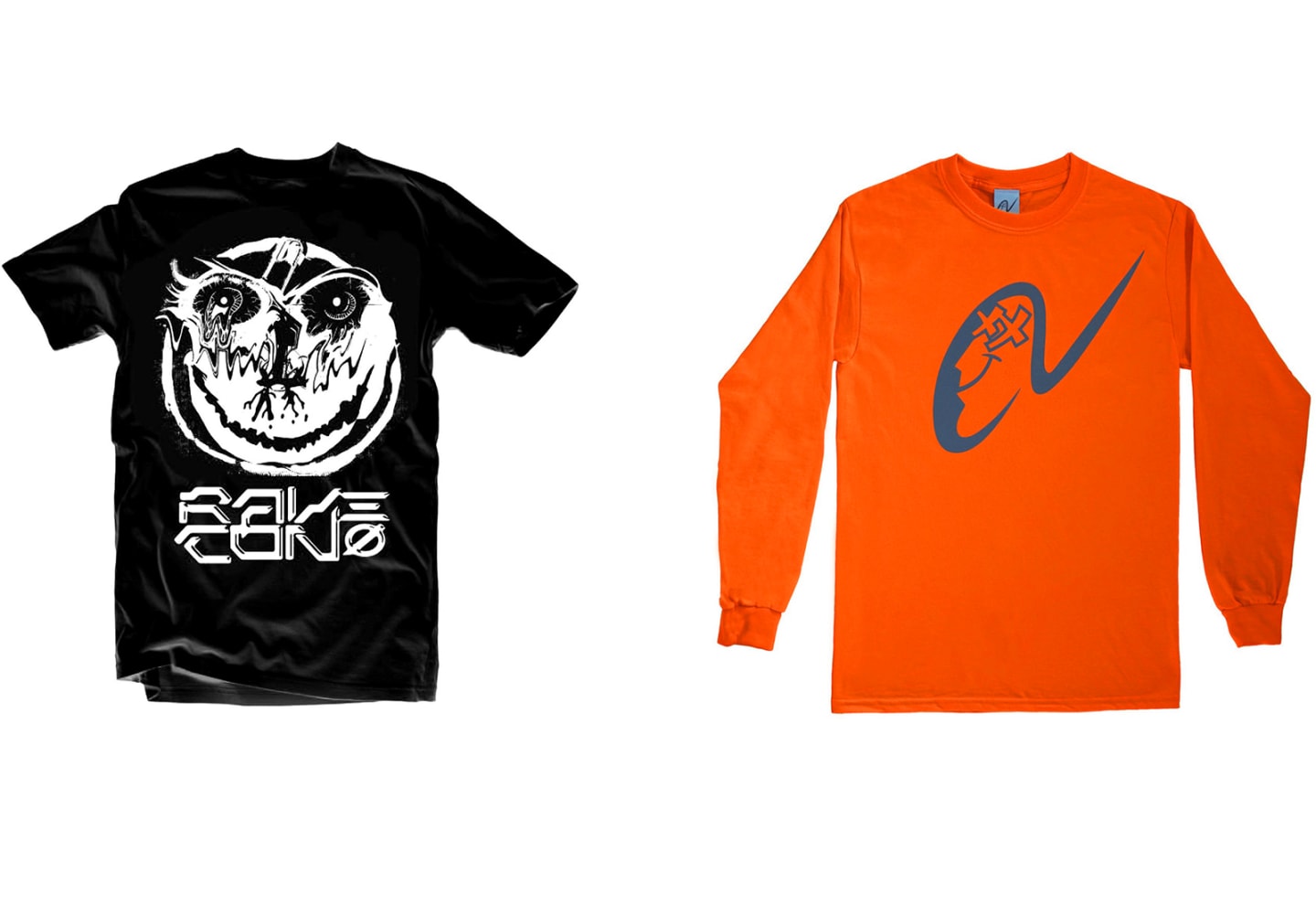
There’s no label that embodies this connection quite like PAN. Known for its high-concept experimental releases and, especially in the last few years, its influence across the international club scene, PAN’s merch can be as slippery as its output, dodging between painterly abstractions and hyper-crisp, futuristic logos. Mirroring their musical counterparts, the designs draw from a myriad of far-flung stylistic influences–and, in the case of Amnesia Scanner, the palette expands to incorporate tongue-in-cheek references to internet culture, memes, folktales and the online marketplace Ali Baba.
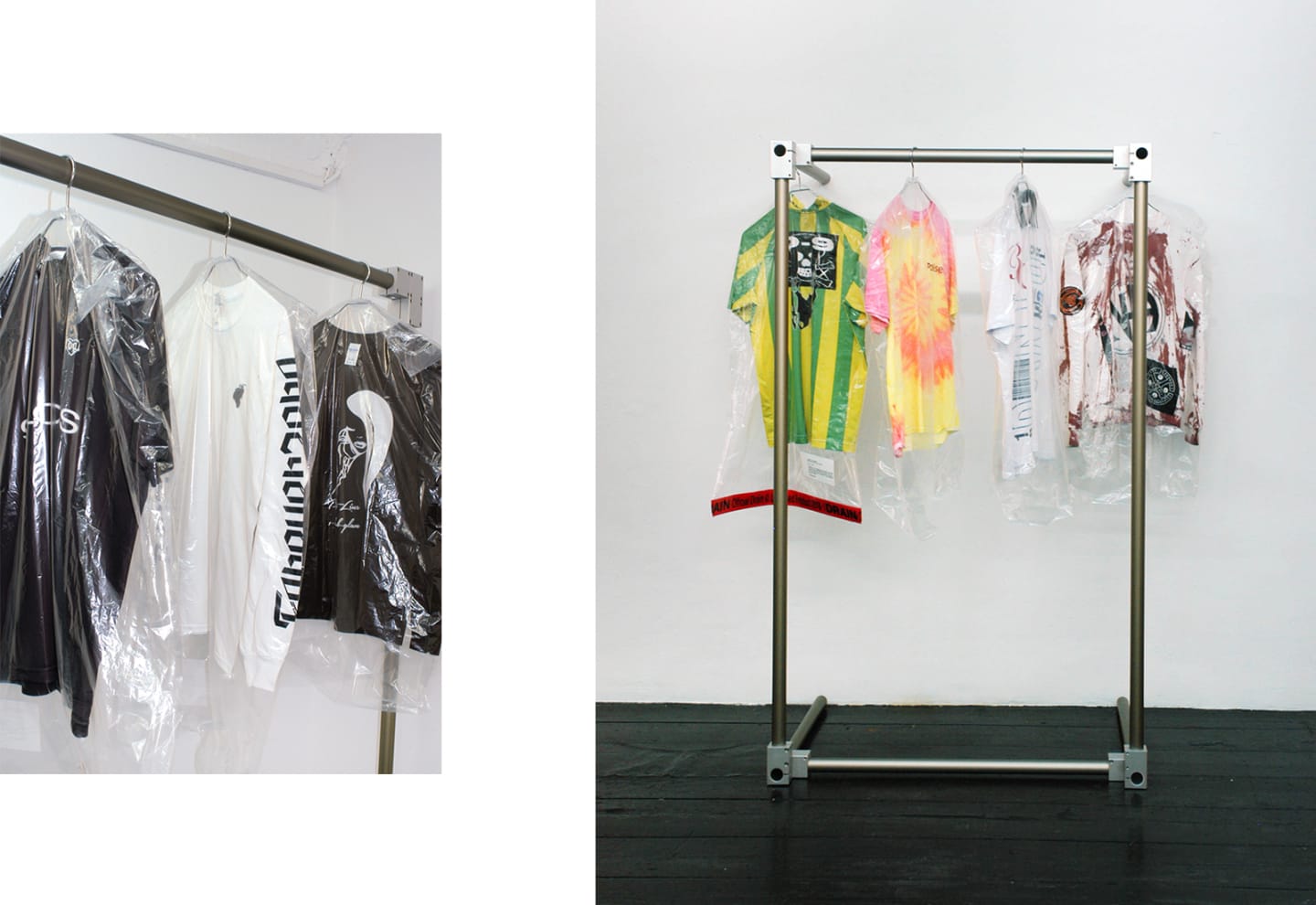
Those looking for a concentrated introduction to the new vanguard of merchandise should look no further than Berlin’s SPACE 31, a multi-use art gallery that houses CULTURE WEAR, which might be best described as a t-shirt “installation.” There, hung on minimalist metal piping within the gallery’s stark white interior, are some of the most exciting designs from and adjacent to the electronic scene. When the exhibition first opened, it featured shirts from some of the aforementioned labels and artists, including PAN and Phire Wire, alongside design firm Sucuk und Bratwurst and designs from Drain Gang’s Ecco2K (A.K.A. Swedish designer and musician Zak Arogundade).
While these pieces are still, at their essence, band tees, they feel more considered. In this environment, they become art-objects, and the time and work put into designing them appears more valuable. CULTURE WEAR’s website captures this sentiment perfectly: “CULTURE WEAR explores the question of commodification through the lens of clothing…these wearables are more than mere memorabilia. They extend the artistic practice, but at the same time act as vehicles for micro-funding and identification by small communities. The juxtaposition of these aspects – the non-commercial nature of culture and the materiality of consumption – is at the heart of CULTURE WEAR.”
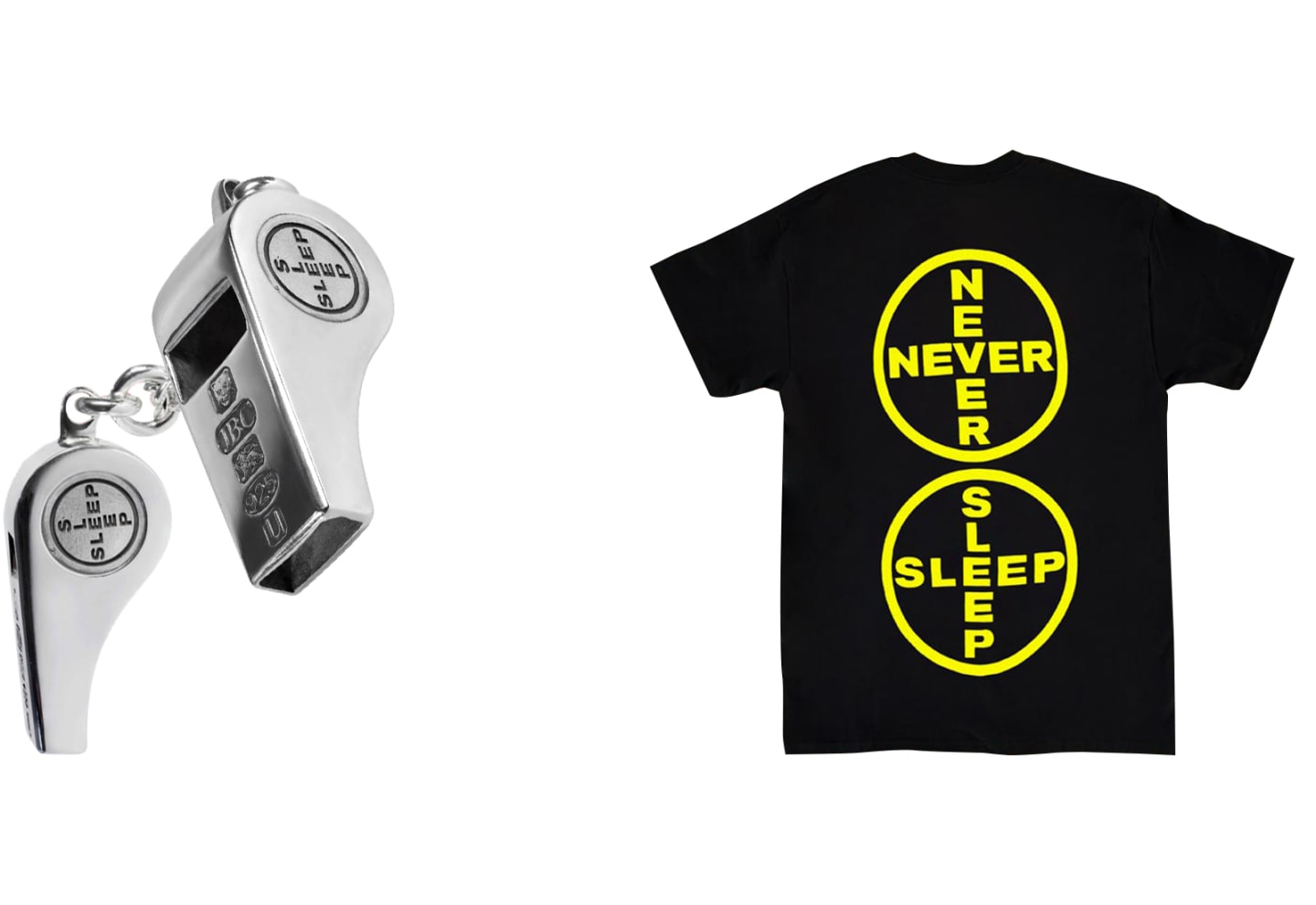
Perhaps the most commercially successful entry in Culture Wear’s collection is rave historian Gabber Eleganza’s now-ubiquitous “Never Sleep” shirt, which features the phrase laid out across an edited Bayer Pharmaceutical logo. By buying the shirt, customers buy into Gabber Eleganza’s archive of gabber culture; it’s a gateway into a larger cultural project that includes a hardcore rave photo stream–which has since been published as a book–a series of Hakken dance-themed performances and an über-lux, sterling silver rave whistle.
The care and curatorial attitude put into the design of these items elevates them to near-icon status, reframing a normally debased scene as a historically important piece of high culture, but CULTURE WEAR’s idea of “the materiality of consumption” also plays a large part. The “Never Sleep” shirt is so popular that its aesthetic has eclipsed its ideology; there are, no doubt, at least a few people wearing this shirt right now that have no idea what it stands for (outside of its titular message, of course). For Gabber Eleganza, this is both a win and a loss; his product may be purchased for its surface-level message, but regardless of the reasoning behind the purchase, it facilitates the continuation of the deeper sides of his project.
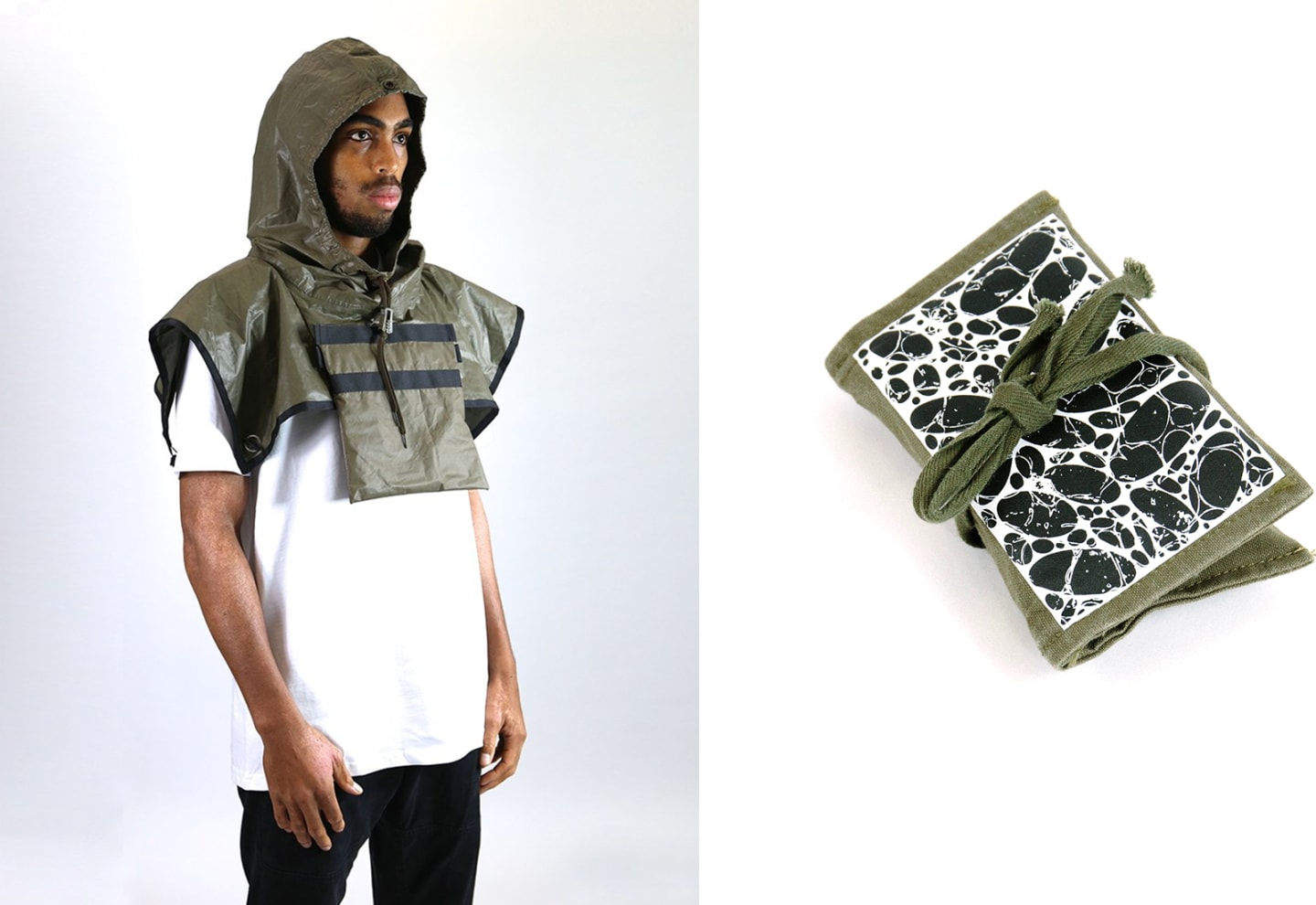
Other labels have fully bridged the gap into fashion by designing entire collections connected to their musical output. One of the most unique takes on this crossover comes from Circadian Rhythms, which released its first compilation, Partisan, this past November. The tape features cuts from some of electronic music’s most in-demand artists, including Shanghai-based producer Hyph11e, London-based PAN affiliate Flora Yin-Wong and Haunter Records co-founder Sense Fracture, but what stands out most about the release is its accompanying fashion line.
Created by Berlin-based producer and designer Linus Nicholson (A.K.A. Ausschuss, who also features on the album), the line includes tech-ponchos, detached hoods, neck gaiters and wallets—most of which were made from recycled and repurposed materials. According to Nicholson, “The collection stems from a lot of discussion we had within the collective about the redundancy of new garments, the large scale destruction the fashion industry causes and finding ways to create something new without using new resources. The need for artists and collectives to create and sell merch is larger than ever, and finding ways to do this without contributing to an already huge issue is crucial.”
The physical release of Partisan extends this ideology to the consumer: “The tape pack is an upcycled Bundeswehr (military) sewing kit, supplying the community with both a way to support the artists behind the work and a means to customize and repair their own clothing,” Nicholson continues, “The project does not solve all the issues it addresses, but it is meant to give people an awareness of how things can be done differently.”
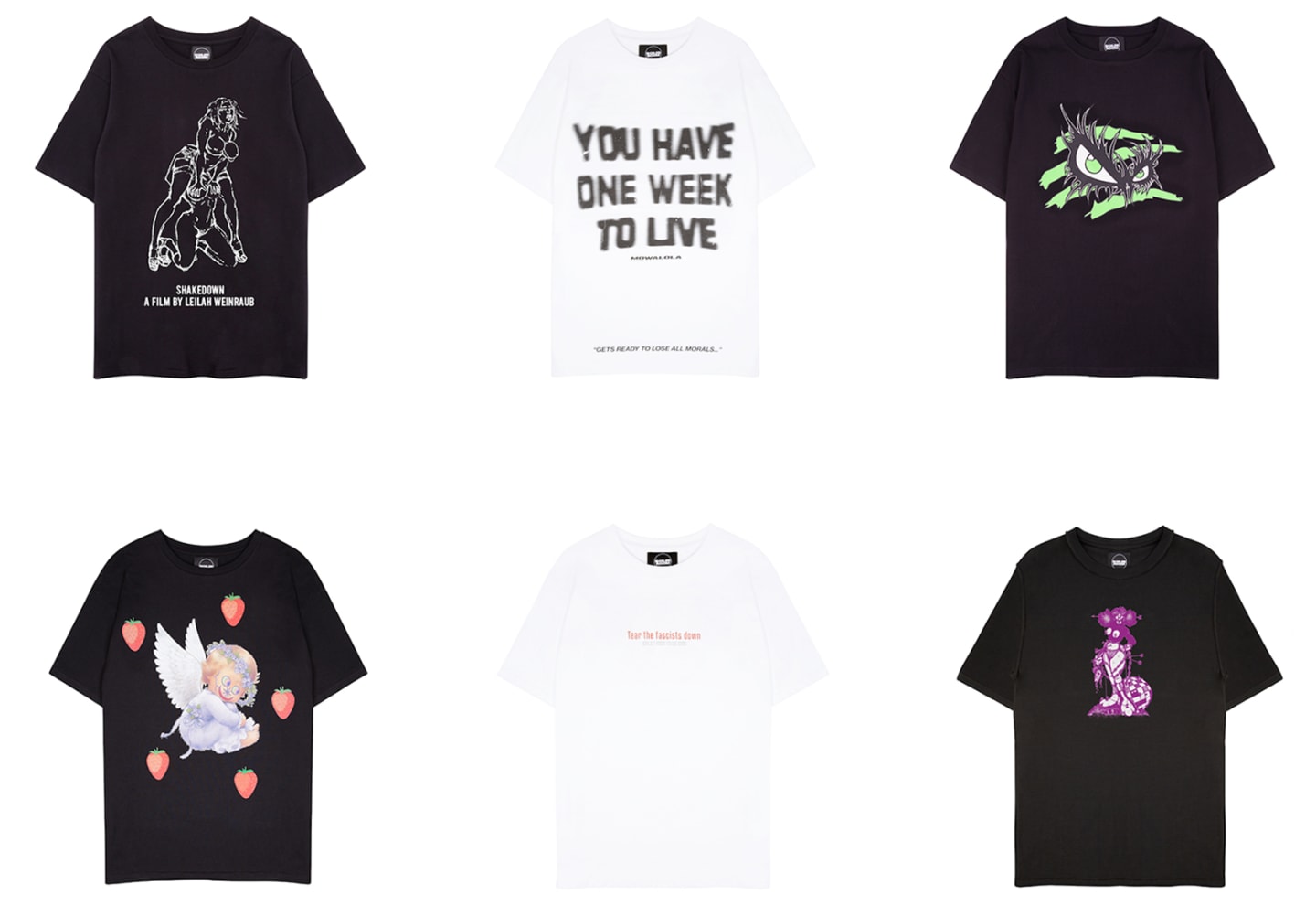
The strength of this new movement in club merchandise comes from the unique visions of its creators, and pushing it on a larger scale requires their direct involvement. Boiler Room’s Club 20/20 ready-to-wear collection was created in collaboration with some of most influential artists designing merch right now, using their varying approaches to revamp the independent music platform’s aesthetic while painting a picture of international club culture. In addition to in-house designs, they’ve asked Crystallmess, Mowalola, No Shade, Juliana Huxtable, Leilah Weinraub, Asian Dope Boys, & Lil Mofo to contribute to a collection that speaks to the diversity of the club community. According to Boiler Room, “each artist was tasked with designing T-shirts that draw on the aesthetic codes from their respective cities whilst simultaneously presenting new visions for club culture.” Boiler Room’s respect for the influence of these regional scenes shows how independent merch designers can be promoted on an international scale. Club 20/20 does what fashion houses have failed at doing: respecting No Shade’s stated mantra: “Take us off your moodboard, and put us on your payroll.”
“Elevated merch” may not be a completely new idea, but now it’s being capitalized to take back club music’s fashion for itself. “Techno purism,” or the staunch, “music and music only” attitude of many of the scene’s veterans has run its course, at least in reference to clothing. In the electronic music community, a subcultural scene that has always valued individuality–listening, feeling and, importantly, looking different–it shouldn’t be uncool to care. The scene has always been a little vain: the only difference is that now a select group of artists and labels are owning up to it.
Zach Tippitt is an editor for Electronic Beats. Follow him on Instagram here.
Graphic design by Ekaterina Kachavina
Published March 23, 2020. Words by Zach Tippitt.






Follow @electronicbeats